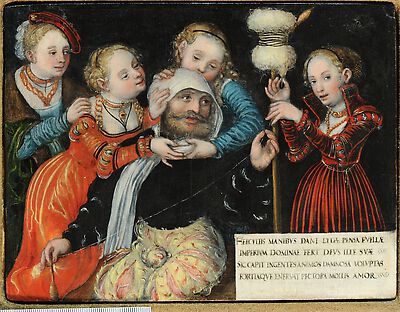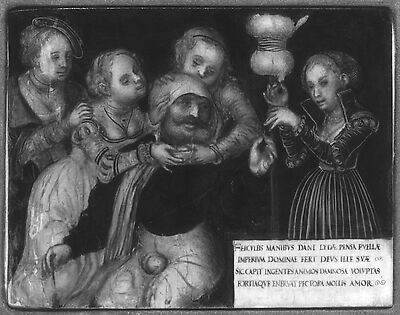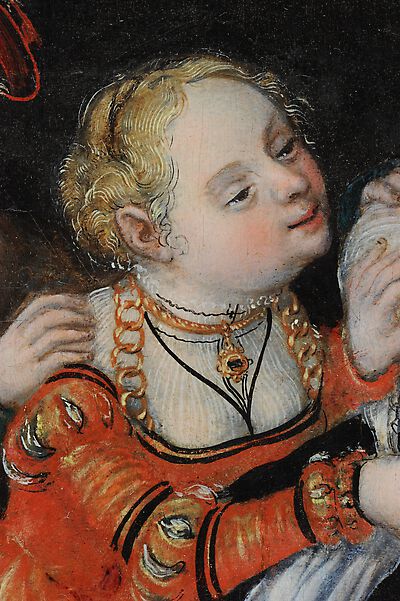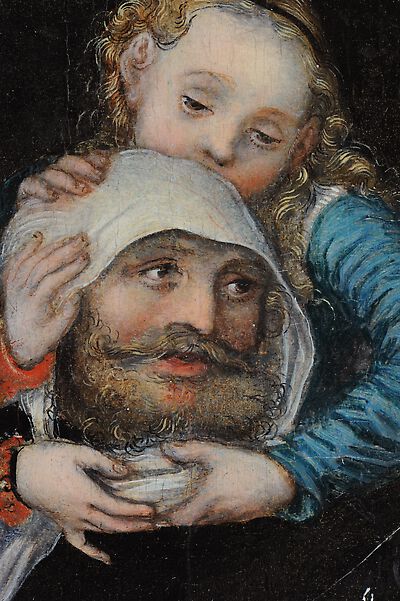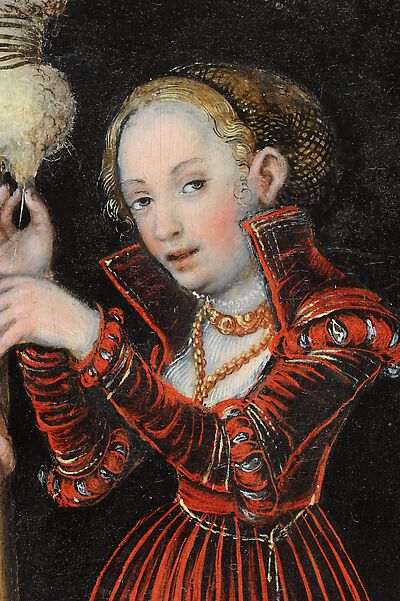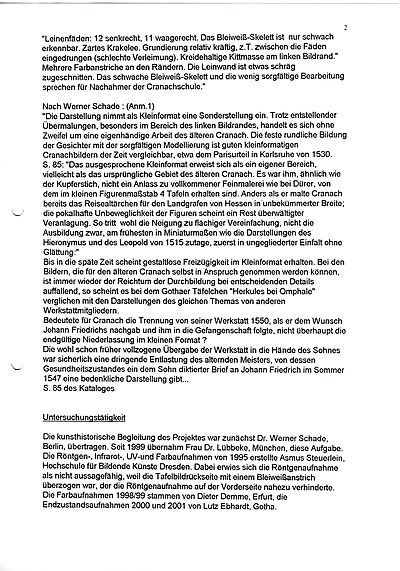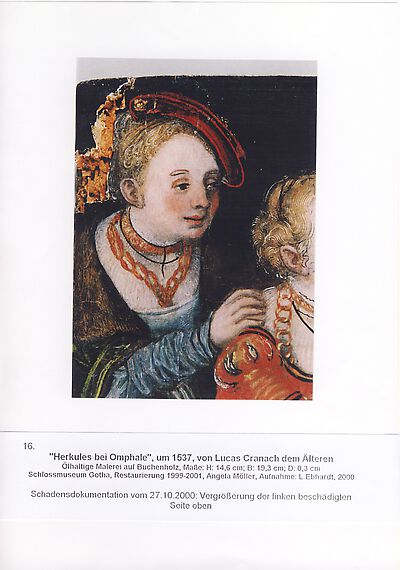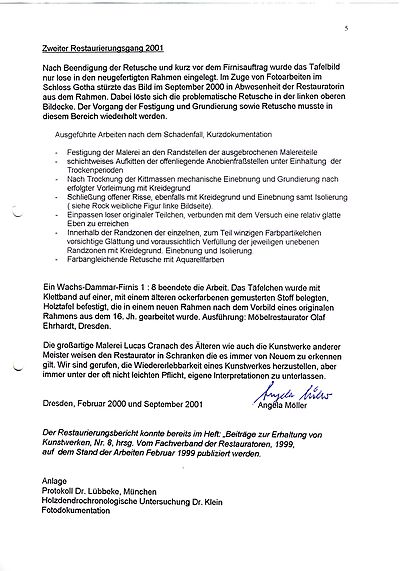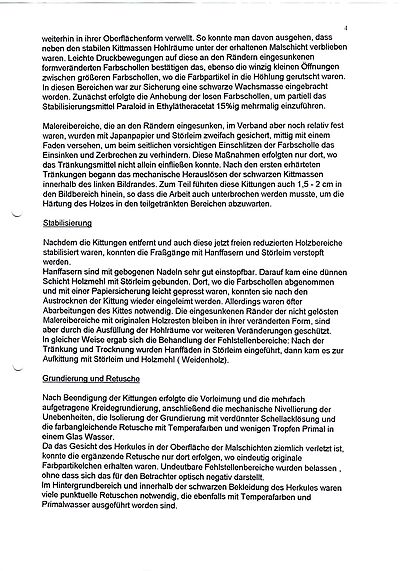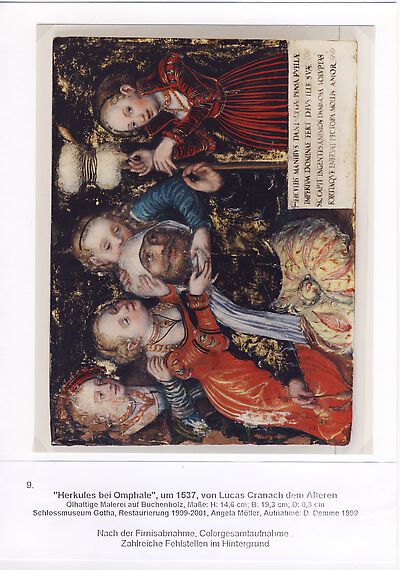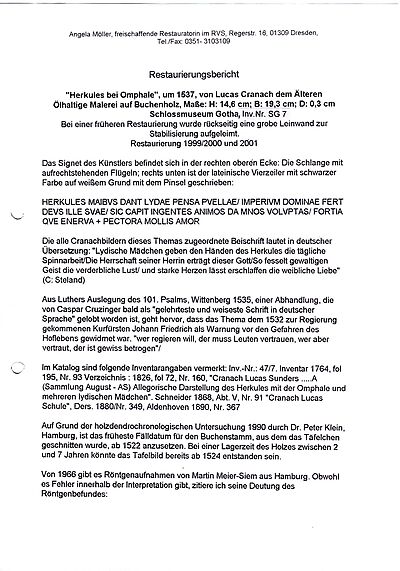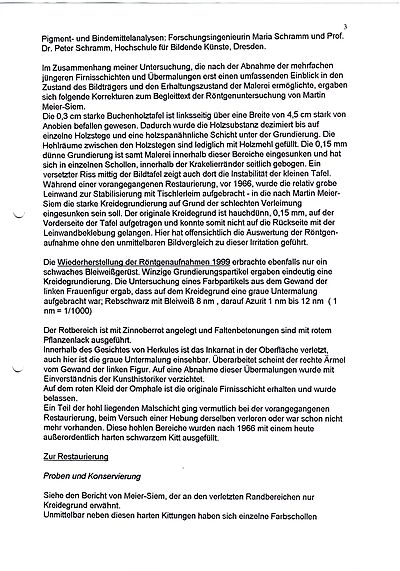Cranach's small format panel depicts an episode from the myths about Hercules: to atone for a murder the Greek hero entered the services of the Lydian Queen Omphale and finally became her lover. Out of love to her Hercules allowed himself to be humiliated by wearing women's clothes and doing
Cranach's small format panel depicts an episode from the myths about Hercules: to atone for a murder the Greek hero entered the services of the Lydian Queen Omphale and finally became her lover. Out of love to her Hercules allowed himself to be humiliated by wearing women's clothes and doing women's work like spinning wool, while he gave his club and lion's skin to Omphale. [1]
Accordingly Cranach depicts Hercules in the company of Omphale's servants, who place a bonnet on his head. The hero is shown spinning a thread, that is tensioned diagonally between his hands and is pulled from a distaff by one of the servants. Hercules appears to follow the thread with his gaze, which leads to the servant, who looks out at the viewer, including him in the events. It is not by chance that a Latin inscription commenting the event is located beneath the image. It is translated as follows: 'The Lydian girls give Hercules' hands work; the sovereignty of his mistress tolerates that divinity. Ruinous lust seizes powerful spirits, and even the most capable minds are enfeebled by tender love.' [2]
[1] Bischoff 1998, 154 f.
[2] Zitiert nach Exhib. Cat. Basel 1974, 574
[Julia Carrasco, in Exhib. Cat. Gotha, Kassel 2015, 216]
- Attribution
- Lucas Cranach the Elder
Attribution
| Lucas Cranach the Elder | [Exhib. Cat. Gotha 2015, No. 63] |
- Production date
- about 1537
Production date
| about 1537 | [Exhib. Cat. Gotha 2015, No. 63] |
- Dimensions
- Dimensions of support: 14.4 x 19.2 cm
Dimensions
Dimensions of support: 14.4 x 19.2 cm
[Exhib. Cat. Gotha 1994, 24]
- Signature / Dating
Artist's insignia in the top right corner: winged serpent with elevated wings, facing left (unclear); in white paint
Signature / Dating
Artist's insignia in the top right corner: winged serpent with elevated wings, facing left (unclear); in white paint
- Inscriptions and Labels
- bottom right, four lines in Latin:
'HERCVLEIS MANIBVS DANT LYDAE PENSA PVELLAE/ IMPERIVM DOMINAE FERT DEVS ILLE SVAE/ SIC …Inscriptions and Labels
Inscriptions, Badges:
- bottom right, four lines in Latin:
'HERCVLEIS MANIBVS DANT LYDAE PENSA PVELLAE/ IMPERIVM DOMINAE FERT DEVS ILLE SVAE/ SIC CAPIT INGENTES ANIMOS DAMNOS VOLVPTAS/ FORTIAQVE ENERVAT PECTORA MOLLIS AMOR'
- Owner
- Stiftung Schloss Friedenstein, Gotha
- Repository
- Stiftung Schloss Friedenstein, Gotha
- Location
- Gotha
- CDA ID
- DE_SMG_SG7
- FR (1978) Nr.
- FR-none
- Persistent Link
- https://lucascranach.org/en/DE_SMG_SG7/
- bottom right, four lines in Latin:
